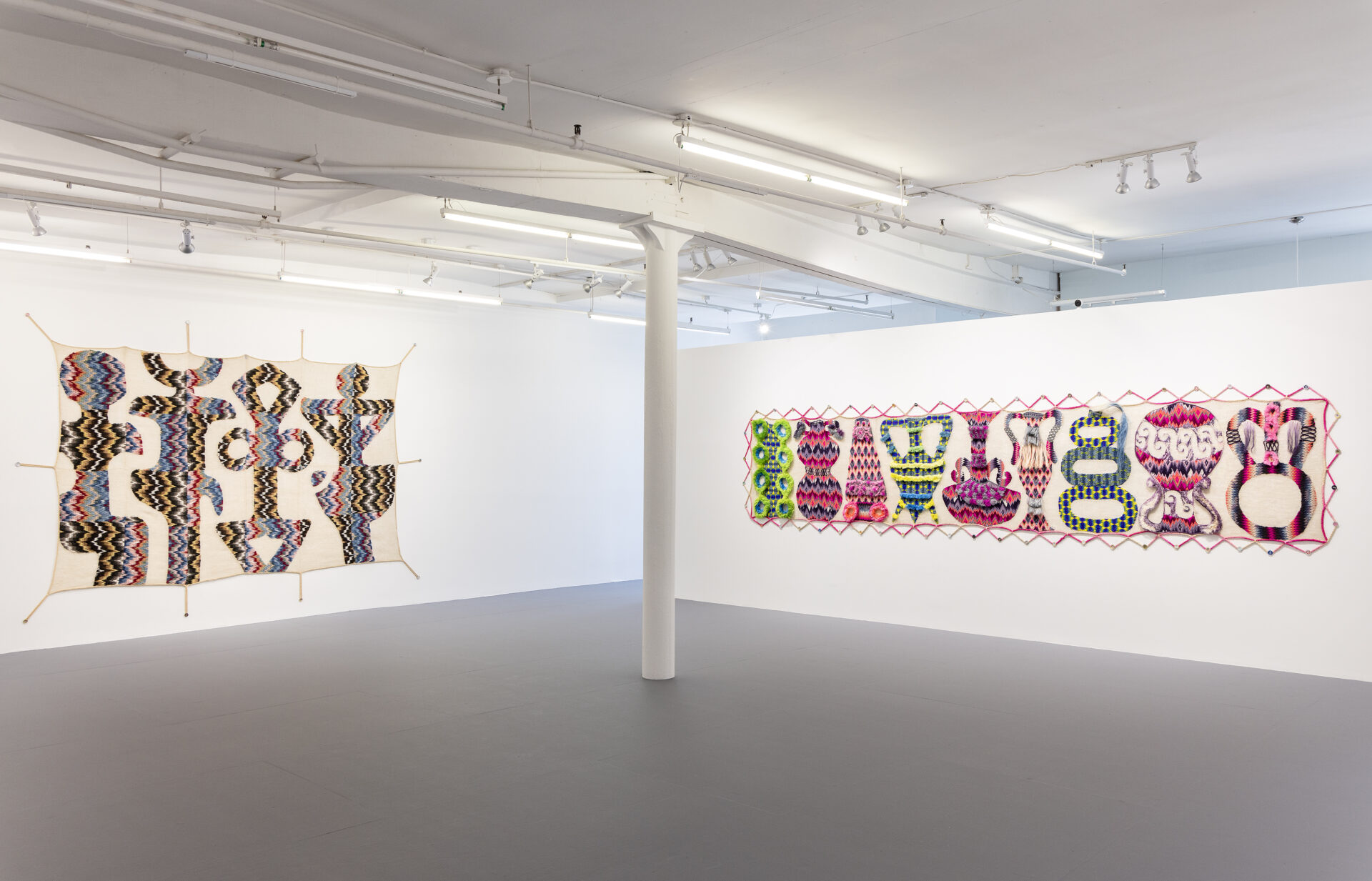
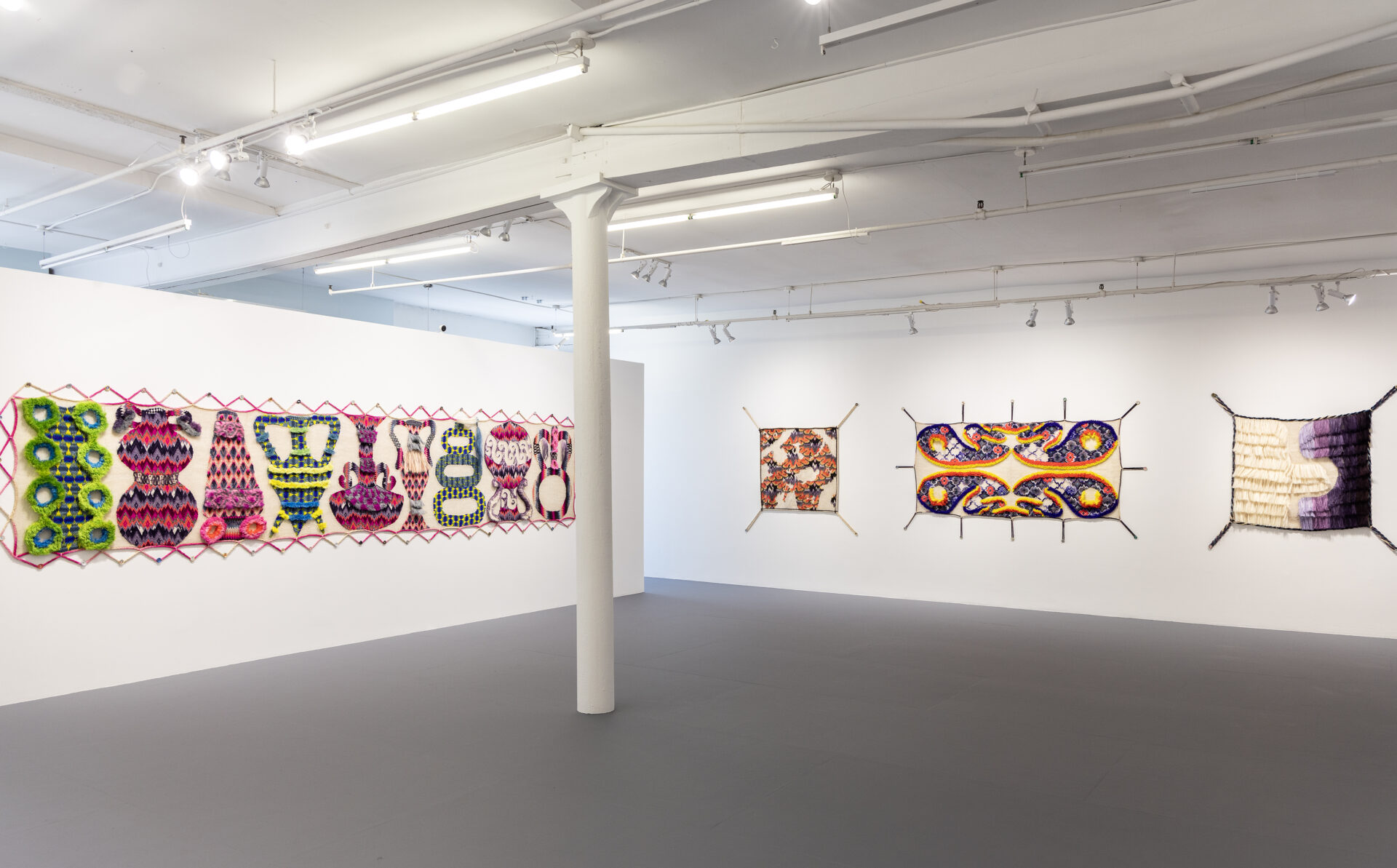
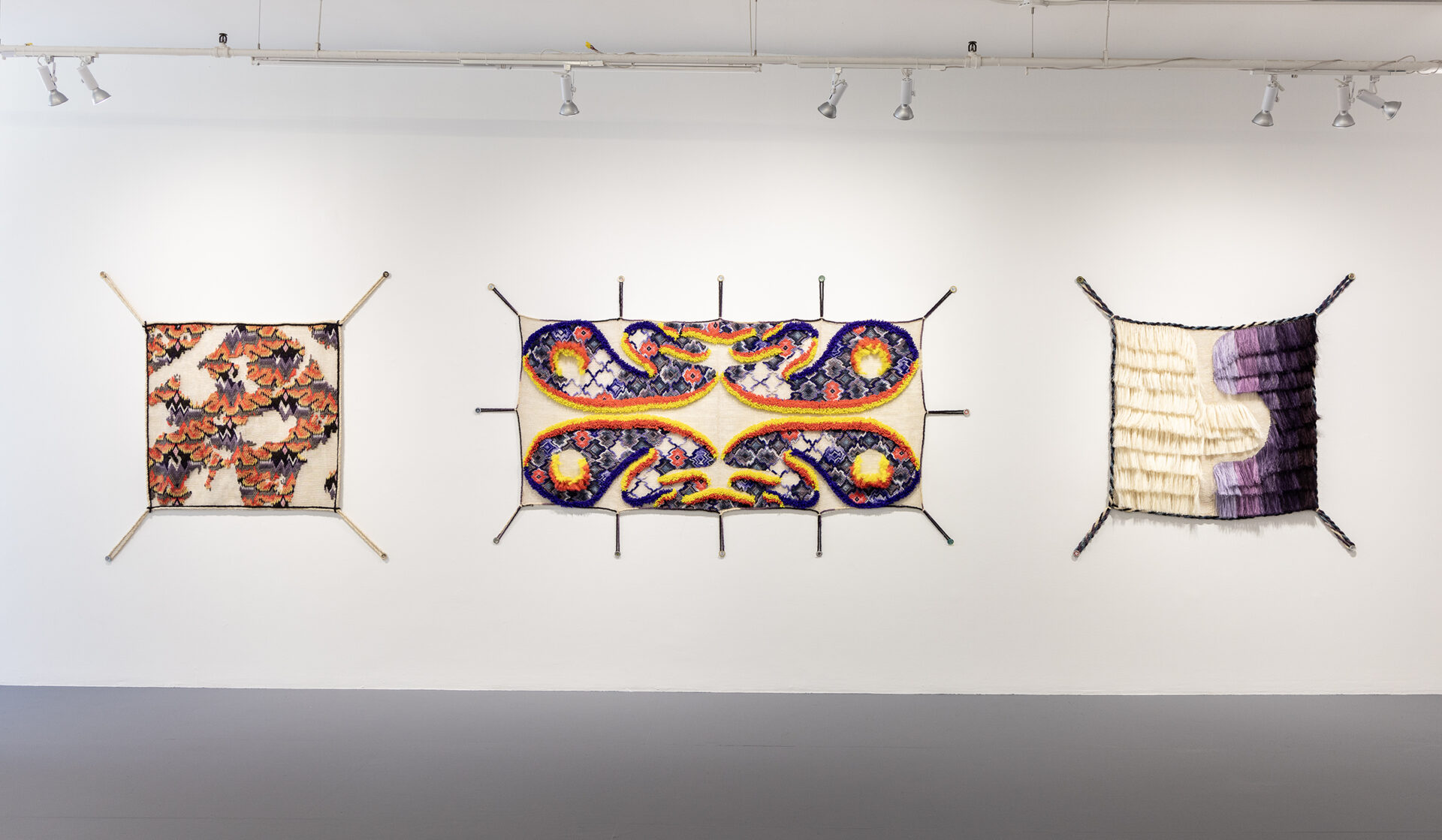
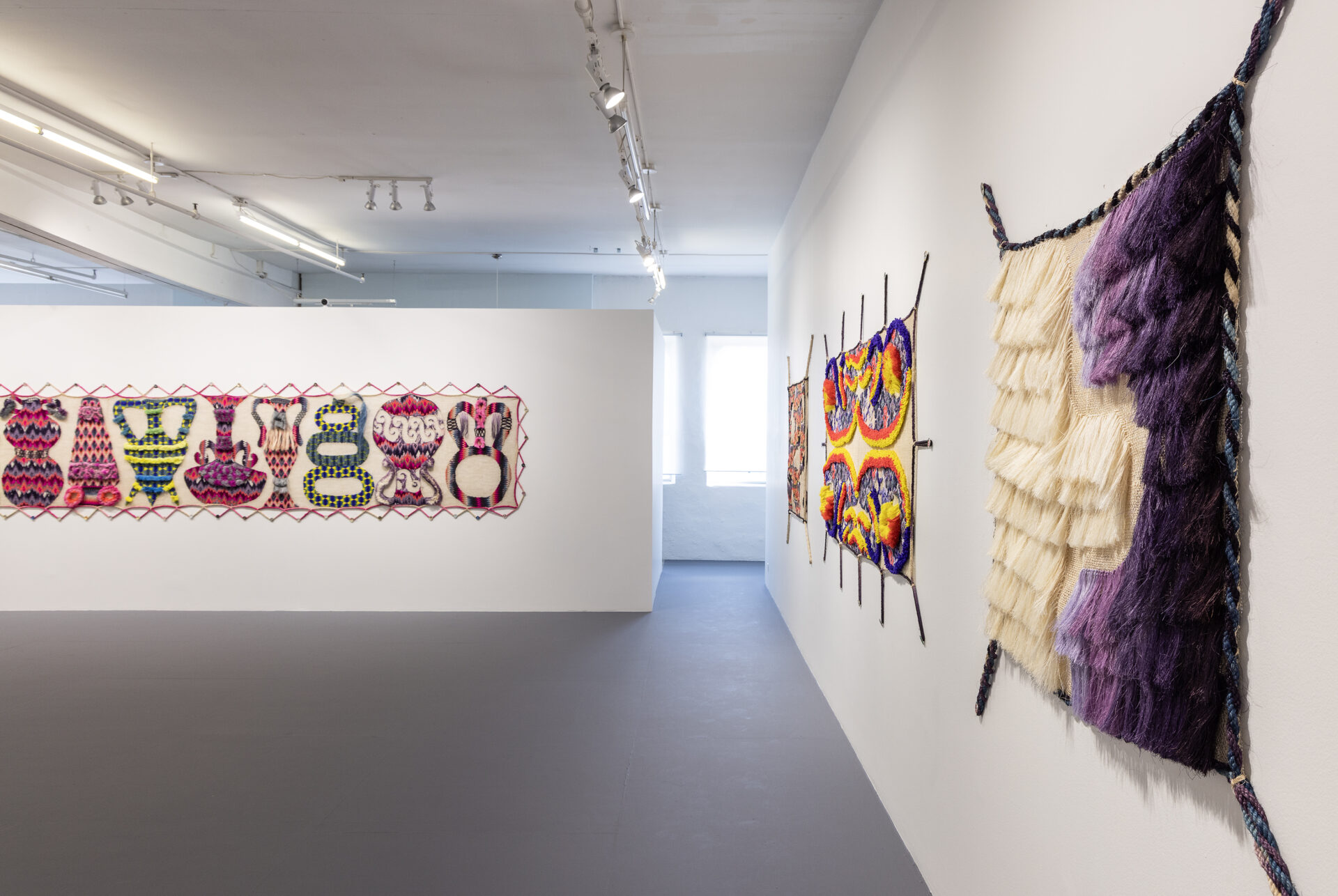
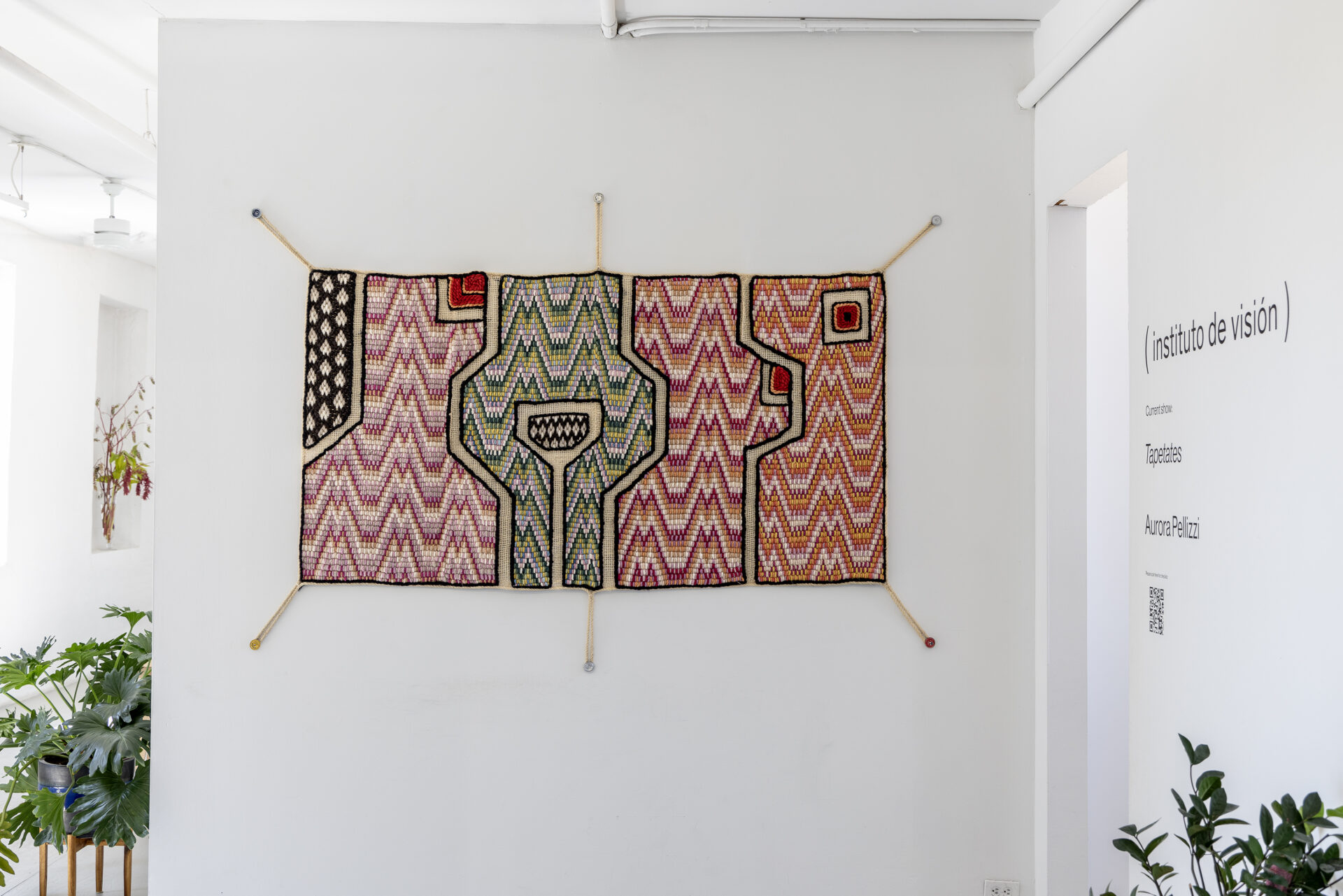
Tapetates
Between textile, ceramics, and material memory
TAPETATES is an exhibition that interweaves layers of history, technique, and symbolism through a recent body of hand-embroidered works (2024–2025) using the Renaissance technique known as Bargello. The title plays on a resonance between three words: tepalcates (fragments of pre-Hispanic pottery), tepetates (geological volcanic strata), and tapetes (woven or embroidered rugs), activating a semantic field that links earth, artifact, and ornament.
Bargello is a 17th-century embroidery technique that mimics woven patterns through stepped stitches and color gradients, creating optical and spatial effects. Its history connects both to Renaissance furniture—such as the armchairs housed in the Bargello Museum in Florence—and to its revival in the 1960s and ’70s through the arts and crafts and hippie movements, as well as feminist thought. These movements reclaimed textile and ceramic processes, revaluing domestic manual labor and challenging the gendered hierarchies of artistic production.
In this series, the artist expands the scale of textile work, exploring the human body—often fully or multiply represented—within rectangular frames that echo the abstraction found in Maya codices, as well as the figurative experimentation of Latin American modernism that drew inspiration from these “discoveries.” The works move fluidly between figuration and abstraction, symbol and matter, to investigate how bodily forms can be translated, distorted, or ritualized through various visual traditions.
In Secuencia de Danza (Patchwork), figures appear in frieze-like formations, evoking archetypal representations in Egyptian art as well as the silhouetted abstraction of Picasso’s Les Demoiselles d’Avignon. The piece also engages with the work of Carlos Mérida, who depicted scenes of carnival, dance, disguise, and cultural communion—placing the human figure in architectural contexts that alter how we perceive bodies in space, and vice versa.
In Cabaret (las Tótems), fragmented, architectural-like bodies interact with the visible support of the woven ayate. Here, the spaces between figures become as important as the forms themselves, revealing the weave of the base material and turning the textile into a visual language of its own.
The artist is drawn to the frieze as a hybrid form—between painting and sculpture, ornament and structure—that has played a key yet often marginalized role in art history. In Tepalcates, this logic reappears through inert objects arranged in a frieze, celebrating ceramics as a medium that is functional, symbolic, and intimately linked to the feminine. Clay, shaped from the earth to hold water, becomes a mirror of the bodies that mold and use it—often taking on the human forms of the women who create and carry it. There is also a recurring visual interplay in ceramics: the imitation of woven textile patterns painted on vessels, as if one medium were dressing or mimicking another.
In Tepeyac, fragments of embroidered tepalcates are reassembled into a mosaic that echoes the volcanic stone floors of the Basilica of Our Lady of Guadalupe, as well as the modernist facades found throughout Mexico City. The work draws on the materiality of the land itself, reconfiguring geological debris into an urban surface that speaks to layered histories—archaeological, cultural, and geographical—and the effort to reconstruct them.
Embonamiento reflects on the ways materials and bodies may or may not fit together, exploring how fragmented parts form or fail to form a whole. Stracci (Texcoco) references the disintegration of antique textiles, speaking to the ephemeral, organic nature of fibers despite the labor-intensive processes involved in their creation. Their unraveling resembles topographic erosion maps or waterlines from ancient lakebeds, as if the textile’s decay charts a disappearing landscape.
In Heket Quimbaya, the artist draws inspiration from a Quimbaya gold sculpture of a frog deity, evoking metamorphosis—of frogs, butterflies, and of the materials themselves. Across the series, chimeric figures emerge: zoomorphic bodies (Secuencia de Danza), shape-shifting deities (Heket Quimbaya), and ceramics that imitate textiles (Tepalcates, Stracci). Through these transformations, the works challenge the boundaries and categories traditionally imposed on artistic media.
The artist expands the scale of the handmade—from the intimate to the architectural, and even geological. The pieces are made with wool and henequén dyed with natural (and sometimes fluorescent) pigments, embroidered onto handwoven ayate cloths made on a backstrap loom. These surfaces—historically humble and domestic—are reconfigured into large-scale, rectangular planes ready for intervention, revealing a dynamic convergence between the ancestral and the contemporary, the body and the land.
New York
88 Eldridge Street, 5th floor
New York, NY, 10002
Tel. +1 (305) 323 3103
TUESDAY- SATURDAY
11:00 am to 06:00 pm